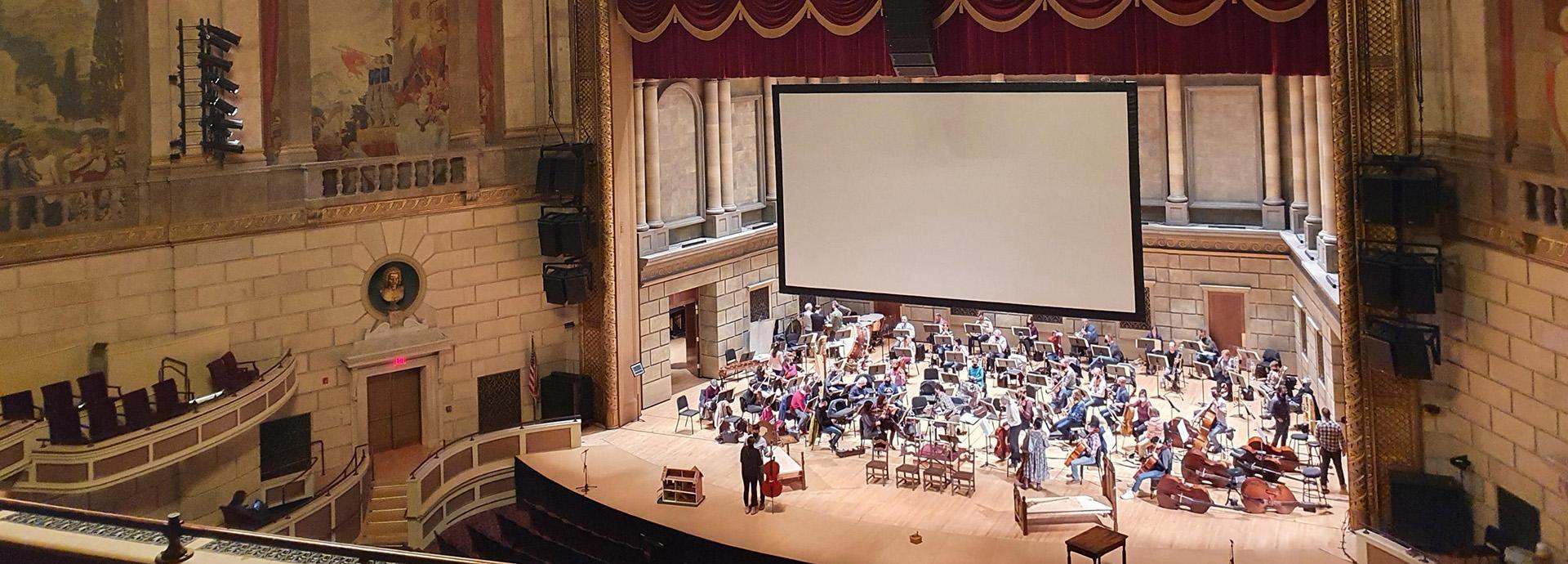

How does a working artist, specifically a musician, make ends meet?
Thinking about funding is an inescapable part of a musician’s life in today’s world. It is easy to generalize and think that funding of the arts in Finland comes from the government and in the United States from private funders. In many ways this is true but having now studied as a doctoral student in the United States I see more nuances in the art funding systems of these countries.
Struggles of an artist: Freedom vs money?
Working in an institution such as a symphony orchestra or a music school enables musicians to pursue a career while staying inside the frames of their job description. For some, there is a need for greater artistic freedom. A clarinetist in an orchestra rarely decides the program for the upcoming season but as a freelancer a musician can become the artistic director of their own music festival. Many of the most interesting and progressive music events happen precisely in the field of freelance. Sadly, it requires a lot of work outside of their craft and it is a waste of talent for an artist to use most of their time with applications and marketing when they could be creating and practicing their craft.
Nevertheless, a freelance musician inevitably must learn how to get paid which often means applications of many kinds. A musician comes across a question: why would someone fund my project over another? Should the project please whoever the funder is?
Money has greatly affected the course of music as we can see looking at the history. The rise of the middle class in 19th century resulted in the foundation of public concert halls and symphony orchestras. The need to sell tickets to concerts resulted in repetition of popular pieces of music. This resulted in a canon, an idea of significant pieces, which still lives strong in the musical world. The centricity of these pieces affects continuously by excluding wonderful pieces of music especially if they are composed by people of marginalized groups. Pleasing the taste of an audience in hope of selling tickets and finding donors has narrowed our conception of what is “good” music.
Which model to be followed: Finland vs the U.S.?
The freelance artists of Finland have experienced a rough couple of years of the pandemic, as have artists all over the world. After the excruciating year and a half of practical lockdown of public events in Finland, the government announced to cut down funding of the arts and culture last October. This obviously caused an upheaval in the music community which, in its part, thankfully resulted in a withdrawal of the cut decision.
One of the crucial parts of governmental art funding in Finland is the profit from Finland's Slot Machine Association. This amount of money has diminished over the years which should be a positive thing since people are gambling less but for the arts it means that there is less money to be given. The scare of funding cuts last October made us realize, if now or ever, that we need to find more sustainable sources of funding.
"Funding is a signal of appreciation for the arts. It means that the hard work is meaningful and that art continues to be a central part of being a human."
Looking for private funding independently is not talked much in Finland where the funding is more focused on the government and big grant foundations. In the United States, private funding is ingrained to the arts. This is evident just by walking into any art institution and seeing that every lobby, performance space and chair in the concert hall is named after a donator. When it comes to the music school curricula, there are courses such as “building a web presence”, “Entrepreneurial Thinking”, “Funding the Individual Artist” and “Marketing in the Digital Age” designed to help future musicians. It seems that the skills of a commercial YouTuber will be the skills of a musician in the future.
Before coming to the United States, I had a belief that Americans avoided conversations about money. I have found this contradicted with many interesting discussions in and outside of classroom. Because the system for funding is very different between Finland and the United States, both can learn from one another.
Funding is a signal of appreciation for the arts. It means that the hard work is meaningful and that art continues to be a central part of being a human.
Read also Iines Kiuru's blog post about preparing for the ASLA-Fulbright Graduate Grant term in the U.S.


